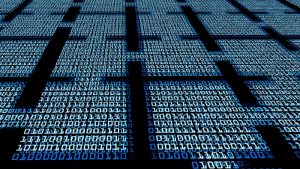Blockchain isn’t new, but state and local governments’ interest in it is fairly recent. And for many state and local government leaders, even those in tech, blockchain is still shrouded in mystery and confusion. Blockchain offers state and local governments new opportunities, both for improving citizen services, streamlining government operations, and improving local economies. In […]
The state of Illinois is making a significant push to be a leader in blockchain technology. In December 2016, the state launched the Illinois Blockchain Initiative. Illinois’ CIO Hardik Bhatt believes blockchain has the capacity to significantly improve government operations.
The United States needs to invest more resources in the security of election systems, Cook County (Ill.) Director of Elections Noah Praetz told the Election Assistance Commission.
Baltimore’s new Cyber Range is hoping to tackle the 200,000 unfilled cybersecurity jobs in this country with cutting-edge, hands-on training. Earlier this month, Baltimore Cyber Range and Cyberbit, a provider of cybersecurity training and simulation platforms, opened the Baltimore Cyber Range cybersecurity training and simulation center.
San Diego County partnered with Esri to release the Know Your Hazards interactive mapping tool that gives citizens real-time data on the likelihood that natural disasters could affect their homes.
This spring, Seattle started looking for a Smart City Coordinator–the first in the city’s history. After a few months of searching, Seattle found the right candidate, Kate Garman. On July 20 the former Innovation Policy Analyst for Kansas City, Mo.’s Office of Innovation was officially appointed to the role.
The Center for Data Innovation (CDI), a Washington, D.C.-based think tank, recently released “The Best States for Data Innovation,” a new report analyzing how states are using data to innovate and offer new services. Topping the overall list were Massachusetts, Washington, and Maryland. Rounding out the bottom were Mississippi, West Virginia, and Louisiana.
The designation of the nation’s election systems as critical infrastructure will not infringe upon state and local authority to run elections. In a recent memo to Senate Homeland Security and Governmental Affairs Committee Members, Ranking Member Claire McCaskill, D-Mo., relayed communications from the Department of Homeland Security that reiterated that fact.
In its latest website redesign, Mississippi included virtual reality, a chatbot, and digital voice assistance technologies in hopes of improving the citizen experience. The makeover of ms.gov includes a brighter, more modern look with a photo of Amazon’s Echo welcoming users on the front page.
Missouri and Arizona are tackling water safety with a new online compliance wizard that can benefit all states. The new wizard helps cities and other localities navigate environmental standards during water system and infrastructure upgrades.













